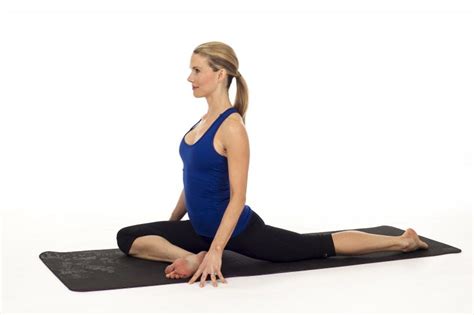Beginner’s Guide to Starting Yoga After Childbirth: Safe Practices for New Moms
Returning to fitness after giving birth can be overwhelming, and yoga offers a gentle yet effective way to regain strength, flexibility, and mental clarity. This article will guide new mothers through safe and supportive yoga practices that cater to post-pregnancy needs. From understanding how yoga aids postpartum recovery to practical steps on how to start, we cover everything you need to know. We’ll also address common challenges and misconceptions to ensure that your postnatal yoga experience is effective, accessible, and enjoyable.
Key Concepts in Postnatal Yoga
Postnatal yoga focuses on restoring the body after pregnancy and childbirth. Some key concepts include:
- Core Rehabilitation: Yoga helps in regaining strength in the abdominal and pelvic floor muscles, which are often weakened during pregnancy.
- Breathwork (Pranayama): Proper breathing techniques help manage stress, improve oxygenation, and support overall recovery.
- Gentle Movements: Restorative poses promote healing, reduce tension, and help avoid injury in the fragile postpartum phase.
- Mental Health Focus: Yoga is known for its mental benefits, offering emotional balance, reducing anxiety, and promoting mindfulness for new moms.
Historical Context of Postnatal Yoga Practices
Yoga has long been associated with physical, mental, and spiritual wellness. Historically, yoga was practiced to achieve a balanced state of body and mind, but specific attention to postnatal yoga emerged in more recent years. Ancient Indian texts like the Yoga Sutras did not focus on postpartum recovery, but modern adaptations have catered to the needs of new mothers.
With the growing global interest in holistic wellness and preventive healthcare, postnatal yoga gained popularity in the 20th century as more women sought alternatives to traditional postpartum recovery methods. Over the last few decades, specialized postnatal yoga classes, videos, and workshops have emerged, focusing on supporting women as they transition into motherhood.
Current State Analysis: Yoga for New Mothers
Today, postnatal yoga is widely recognized as an effective method for postpartum recovery, with dedicated classes and online resources available. However, it’s important to approach this practice carefully to avoid injury, particularly for women who have undergone C-sections or experienced complications during childbirth.
The key benefits of postnatal yoga include:
- Physical Healing: Yoga promotes gradual healing of the body, focusing on areas such as the lower back, abdomen, and pelvic floor, which endure significant strain during pregnancy.
- Emotional Support: The hormonal changes post-pregnancy can lead to emotional upheavals. Yoga helps balance emotions and fosters a positive mental state.
- Community and Support: Postnatal yoga classes often foster a supportive community of new moms, providing emotional connections and shared experiences.
Practical Applications: Getting Started with Postnatal Yoga
Here are some steps to safely begin postnatal yoga:
- Consult Your Healthcare Provider: Always seek advice from your doctor or midwife before beginning any exercise program post-pregnancy, particularly if you had a C-section or experienced other complications.
- Start Small: Begin with gentle, restorative poses, focusing on breath and alignment rather than intensity. Gradually progress as your body strengthens.
- Focus on Core and Pelvic Floor: Postnatal yoga should prioritize rebuilding core strength and pelvic floor integrity through targeted poses like Cat-Cow, Bridge Pose, and gentle Twists.
- Integrate Mindfulness: Incorporate breath awareness and meditation into your practice. These elements of yoga help reduce stress, which is common in new mothers.
- Join a Class: If possible, attend a postnatal yoga class where instructors can provide modifications and ensure you’re practicing safely.
Case Studies: Real Stories of Postnatal Yoga Success
| Mom | Experience | Results |
|---|---|---|
| Amy | Practiced postnatal yoga six weeks after a natural delivery. | Improved core strength, better posture, and emotional balance. |
| Jessica | Started yoga after a C-section at 10 weeks postpartum. | Gradual recovery, reduced back pain, and increased flexibility. |
| Monica | Struggled with postpartum depression and anxiety, used yoga as a mental health tool. | Improved mood, less anxiety, and better sleep. |
Stakeholder Analysis: How Postnatal Yoga Impacts Mothers, Instructors, and Healthcare Providers
- Mothers: Primary beneficiaries of postnatal yoga, gaining physical and mental recovery support.
- Yoga Instructors: Play a crucial role in providing safe and effective guidance for new moms. Their expertise is essential in modifying poses to suit individual recovery needs.
- Healthcare Providers: Often advocate for postnatal yoga as a low-risk, beneficial practice for postpartum recovery.
Implementation Guidelines for Postnatal Yoga Programs
To successfully implement postnatal yoga, follow these guidelines:
- Design Classes for Beginners: Ensure that classes cater to various recovery stages, offering modifications and options for women with different fitness levels.
- Focus on Safe Progression: Gradual progression from simple to more complex poses is crucial in avoiding injuries, especially for women healing from C-sections or other childbirth-related issues.
- Offer Emotional Support: Create an environment that not only promotes physical healing but also emotional support, perhaps incorporating moments for discussion or group sharing.
Ethical Considerations: Inclusivity in Postnatal Yoga
Postnatal yoga should be inclusive and respectful of various cultural backgrounds and different postpartum recovery experiences. Instructors need to be sensitive to the individual needs of each woman, understanding that recovery timelines differ widely.
Furthermore, ethical considerations include respecting the privacy and consent of participants in group settings, particularly when discussing personal experiences related to motherhood and childbirth.
Limitations and Future Research on Postnatal Yoga
While postnatal yoga is highly beneficial, there are limitations:
- It may not be suitable for all women, particularly those with certain medical conditions or injuries post-childbirth.
- The efficacy of postnatal yoga on severe cases of postpartum depression remains an area of limited research, warranting further study.
- Additional research could explore the long-term benefits of postnatal yoga in terms of core rehabilitation and pelvic floor health, as well as its potential in preventing future complications.
Expert Commentary on the Role of Postnatal Yoga
Experts agree that postnatal yoga offers a multitude of benefits, including physical healing, emotional balance, and community building. Dr. Sarah Johnson, a well-known obstetrician, emphasizes the importance of starting slowly and progressively, particularly for women who may not be familiar with yoga or those recovering from more difficult births.
“Yoga is not just a physical practice,” says certified yoga instructor Amanda Lee, “It’s also about creating a safe space where new moms can connect with themselves and others, which is invaluable during the postpartum phase.”
Overall, postnatal yoga is an adaptable, gentle practice that can fit into almost any new mom’s recovery plan, offering numerous physical and emotional benefits.








